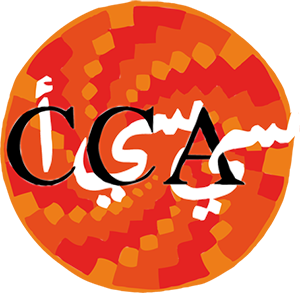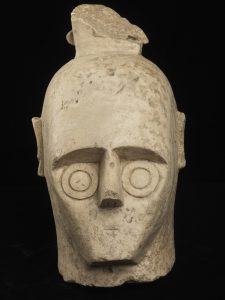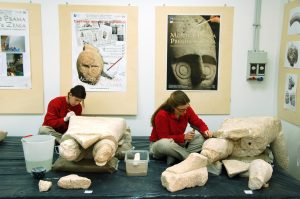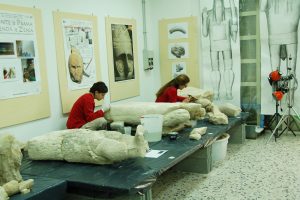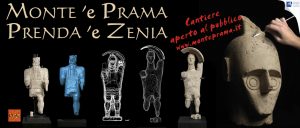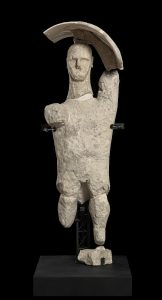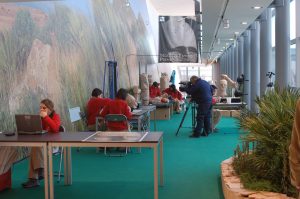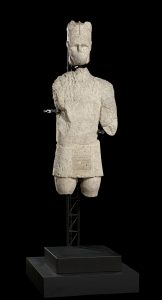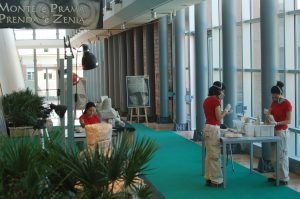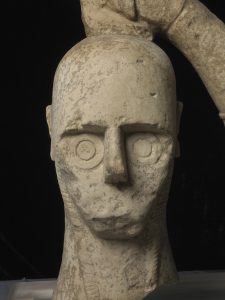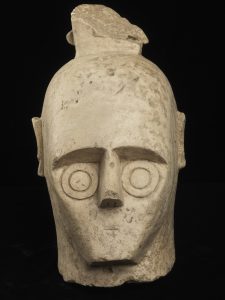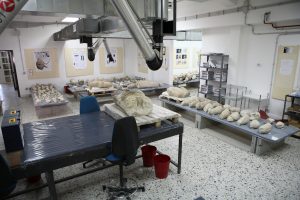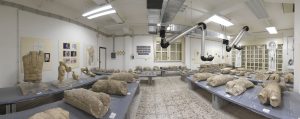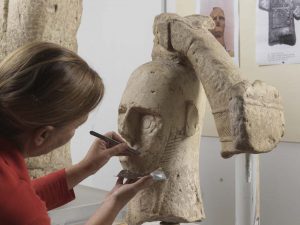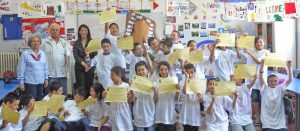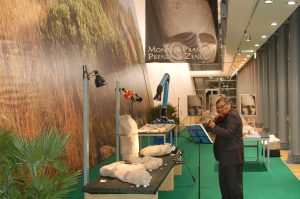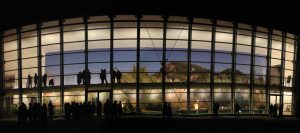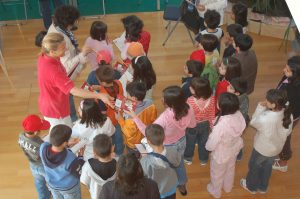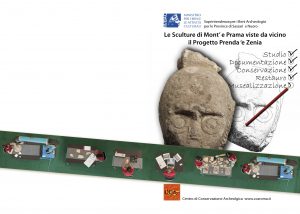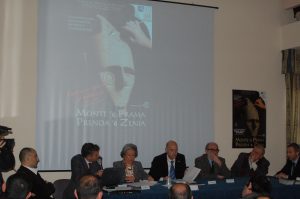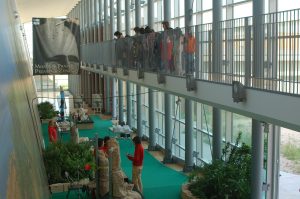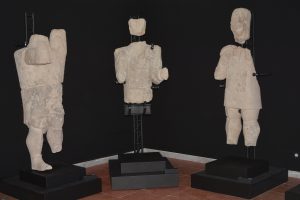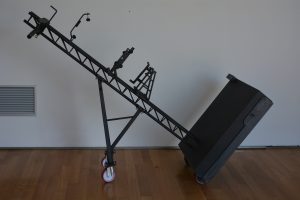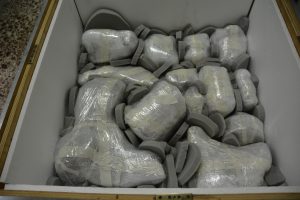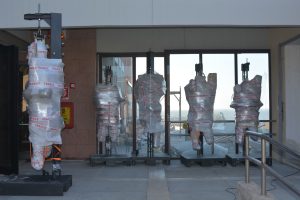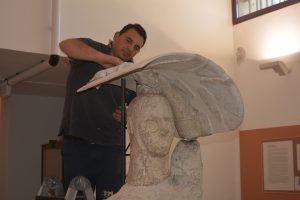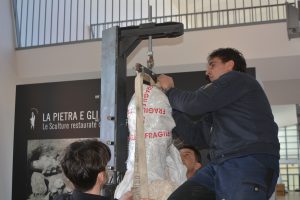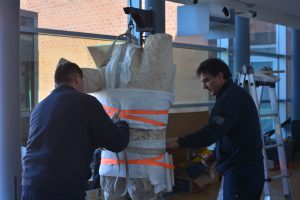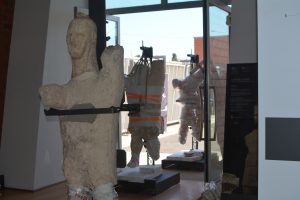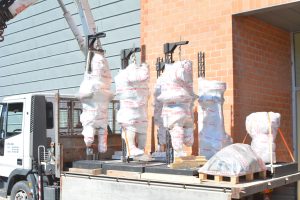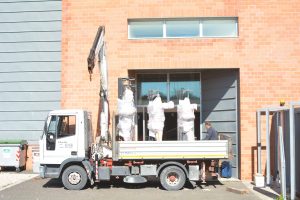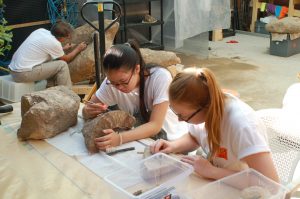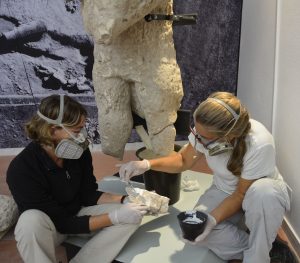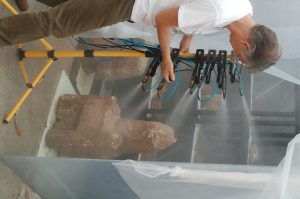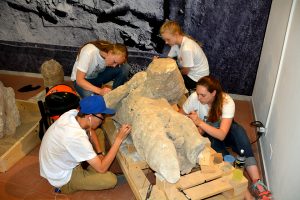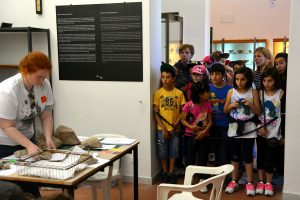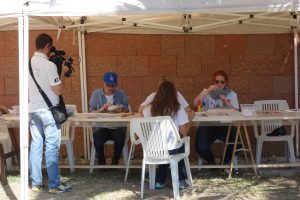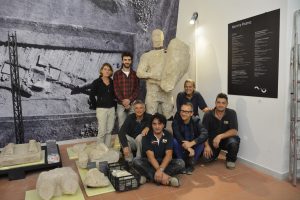Mont’e Prama 2015: Restoration and conservation of the “new finds”
During the excavation campaign undertaken at Mont’s Prama (OR), in the summer 2014, by the Soprintendenza ai Beni Archeologici delle provincie di Cagliari e Oristano and the University of Sassari, many new sculpture fragments were found.
In May 2015, CCA started a restoration and conservation project for the new finds, stored at the Museo Civico “Giovanni Marongiu” of Cabras (OR).
The project, carried out during May-June 2015 and in October of the same year, led to the final museum display, on support, of a complete sculpture belonging to a typology of boxer previously unknown. Another outcome of the project has been the complete documentation of 1934 fragments, both large and small, as well as numbering every element. Furthermore, cleaning and search for joins have been started.
The project was undertaken within the framework of an agreement among CCA, the Soprintendenza per I Beni Archeologici della Sardegna, Cabras Municipality and several universities in the United States. The program has involved thirty students from the North American universities Binghamton University (New York), Connecticut College (Connecticut), Grove City College (Pennsylvania), Randolph College (Virginia), The College of Wooster (Ohio) and Delaware University (Delaware). Students took part to a training course carried out by CCA at Cabras Museum in May and June.
The restoration and conservation of the sculpture has been supported by CCA’s past experience with Mont’e Prama material, having designed and undertaken the program “Mont’e Prama. Prenda ‘e Zenia” in 2007-2010. The same professionals and the same methodology and techniques previously used to carry out the restoration of a collection of 28 sculptures and 10 nuraghe models have been applied to conserve, safeguard and enhance the public value of the new finds from the recent Mont’e Prama archaeological excavations.
CCA set up a workspace within the rooms granted by the Cabras Museum. The museum space were organized in such a way to allow interaction with the public, which was able to watch closely the restoration and conservation operations. This initiative has also been successful in raising the interest of media, both national and international.
The intervention was preceded by a complete documentation campaign, involving, for each fragment, digital photography, numbering, design of a graphic map, recording of conservation condition and finally filing in a digital database.
All fragments went through an initial cleaning by soft brushes and mechanical tools such as scalpels and probes. Later, the fragments considered most significant were subject to the atomization process: they are placed in a chamber and exposed to a very fine dust of water and compressed air. The action of atomized water weakens the superficial deposit layer, without affecting the original stone surface.
The cleaning operation is crucial for searching for joins between the different fragments. Once the category to whom each fragment belong has been identified, the search is carried out according to iconographic criteria, to conservation condition and to decorative techniques.
The boxer sculpture was mounted on a new support, specifically designed and realized to sustain the new typology, the boxer with the curled shield.
The new sculpture on support was presented to the public on the 15th of October 2015 at Cabras Museum, during the ceremony for the awarding of Europa Nostra Cultural Heritage Awards 2015, which was conferred to CCA for the previous restoration project of Mont’e Prama sculptures.
1. American students clean the boxer sculpture
2. A nuraghe model in the atomization chamber
3. Cleaning of sculpture fragments
4. Assembling the sculpture on support
5. School children watch the conservation intervention in the Museum of Cabras
6. International media report on the conservation of Mont’e Prama sculptures
